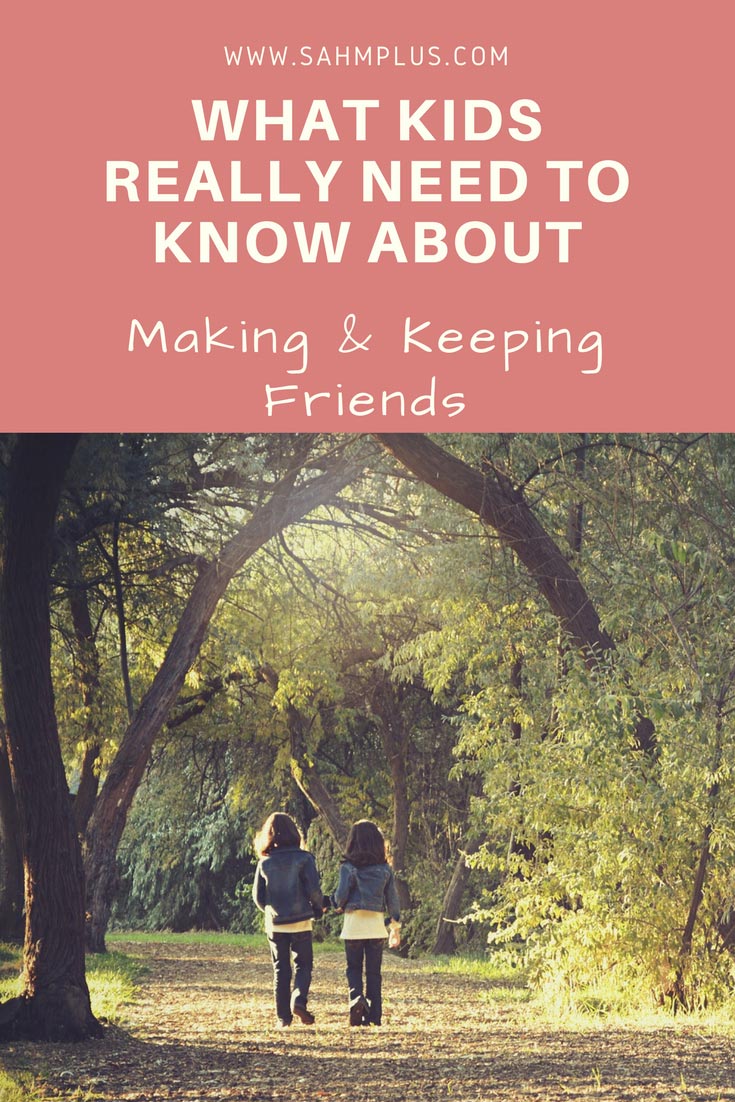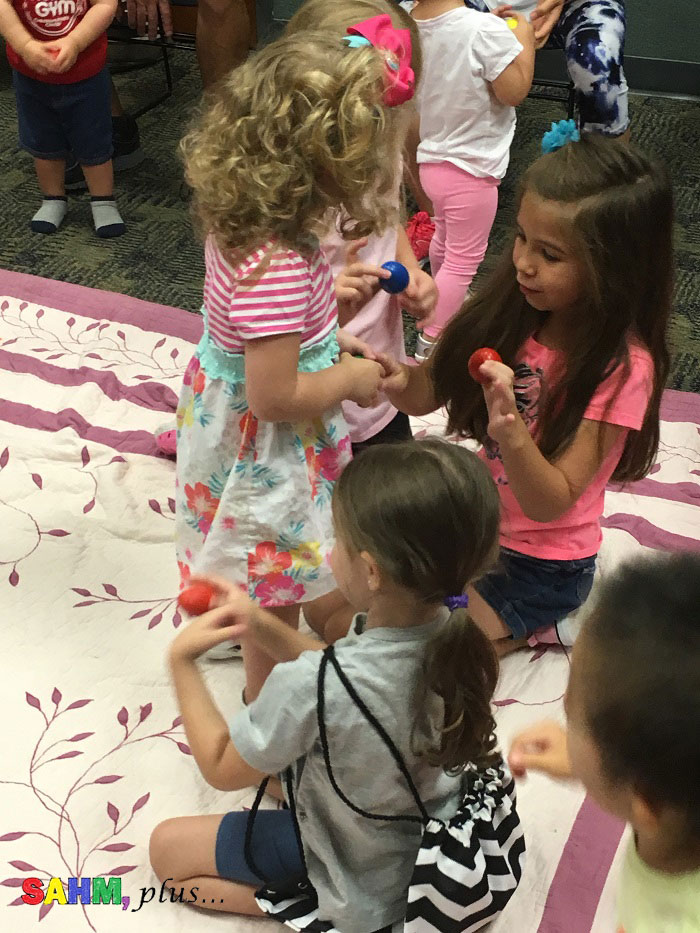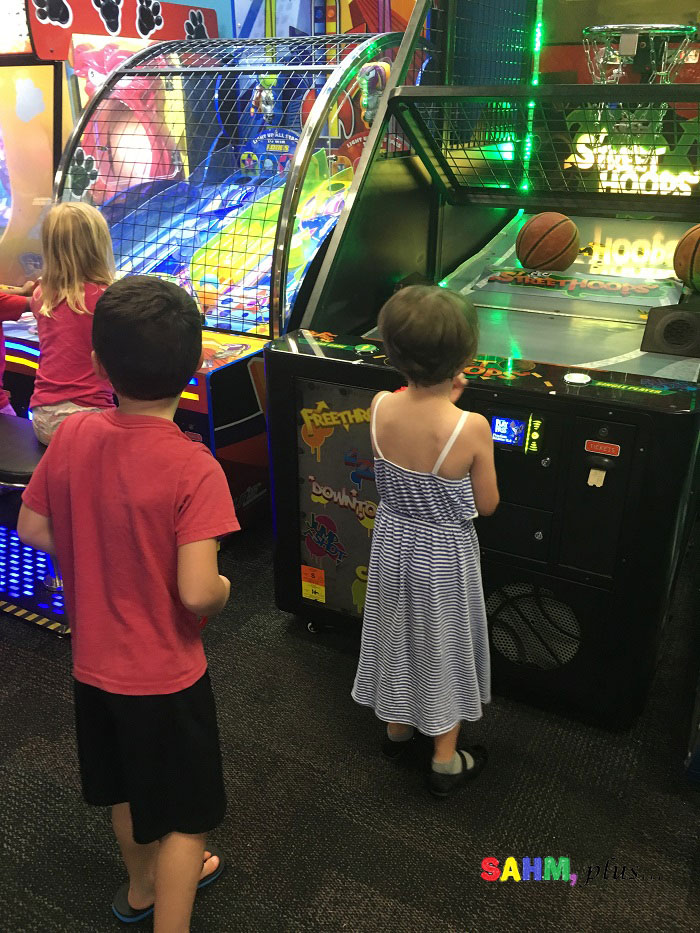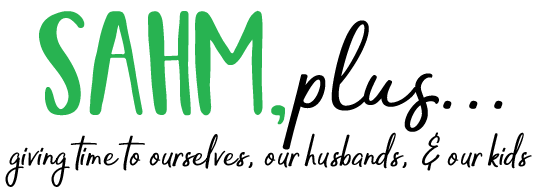Do your kids have trouble making and keeping friends? If so, this is what you need to know to help kids build healthy friendships.
I desperately wish this book had been available to me growing up. Especially as an introvert, I have, and still do have, a difficult time making friends.
I placed all my energy into a really small pool of friends. when I was in school And, when new people entered the circle wanting to compromise the time of one of my best friends, my pool was smaller. I distinctly remember writing one girl a note (because we didn’t have cell phones back in my day) in an effort to have my best friend returned to me. I didn’t necessarily want her all to myself, but I did want to have her back in some capacity. I missed her and hadn’t really connected with anyone else on that level in my life.
In some ways, I’m still that young girl. I’ve got that one really good friend (even though we don’t talk very often). And, I have a few friends in different “groups” if you will. I don’t spend much time with anyone, and I don’t have many very close friends.
So, it stands to reason I’m not the best at teaching my kids about making and keeping friends. Because of which, I’m thoroughly grateful for Growing Friendships: A Kids’ Guide to Making and Keeping Friends by Dr. Eileen Kennedy-Moore & Christine McLaughlin.
As my daughter has entered 1st grade, this book is helping us to build on the friendships she already has while making more friends!
Disclaimer: I received this book in exchange for my honest opinion. No other compensation was received. There are affiliate links in this post … your purchases allow me to continue bringing you free content on this website.

Building Blocks of Healthy Friendships
If you want to help your kids build healthy friendships, it’s important to keep in mind what makes any relationship thrive.
Think of building friendships like constructing a sturdy fort. You wouldn’t just pile up random bricks, would you? Each block needs to fit together securely to create a strong and supportive structure. Similarly, healthy friendships are built on a foundation of essential qualities that help them thrive. Let’s explore some of these key building blocks:
1. Communication:
Imagine a seesaw where one child can’t hear the other. It’s pretty tricky to coordinate and have fun, right? Communication is the two-way street of friendship. It involves:
- Active listening: Truly paying attention to what your friend is saying, not just waiting for your turn to talk.
- Clear and respectful communication: Expressing your thoughts and feelings openly and honestly, while being mindful of your friend’s perspective.
- Expressing needs and wants safely: Feeling comfortable communicating what you need and want in the friendship, and understanding that it’s okay to have different desires sometimes.
- Non-verbal communication: Remember, it’s not just what you say, but how you say it. Eye contact, facial expressions, and body language all play a role in conveying your message.
2. Respect and Empathy:
Friendship thrives in a garden of acceptance and understanding. Respect and empathy are the sunshine and water that help it flourish:
- Recognizing and valuing individual differences: Every child is unique, with their own quirks, talents, and perspectives. Celebrate these differences and see them as strengths that enrich the friendship.
- Showing understanding and compassion: When your friend is going through a tough time, be there for them with a listening ear and a kind word. Put yourself in their shoes and try to see things from their perspective.
- Accepting others’ opinions and feelings: Even if you disagree with your friend sometimes, remember that it’s okay to have different viewpoints. Respect their right to express their feelings, even if they’re different from yours.
- Setting healthy boundaries: It’s important to know where your comfort zone ends. If something your friend is doing makes you feel uncomfortable, communicate it assertively and set boundaries that both of you can respect.
3. Trust and Loyalty:
Just like a secret recipe passed down through generations, trust is a precious ingredient in any friendship. It involves:
- Keeping promises and confidences: If your friend shares something personal with you, keep it under lock and key. Likewise, always strive to be someone your friend can rely on to keep their promises.
- Being reliable and supportive: Show your friend you’re there for them, through thick and thin. Be someone they can count on to lend a hand, offer encouragement, and celebrate their successes.
- Standing up for each other: True friends have each other’s backs. If someone is being unkind to your friend, be their voice and advocate for them.
- Avoiding gossip and negativity: Spreading rumors or negativity about others can quickly poison a friendship. Focus on building each other up, not tearing others down.
4. Conflict Resolution:
Friendships, like good rollercoasters, are bound to have a few dips and turns. Disagreements and conflicts are inevitable, but how you handle them can make all the difference. Think of conflict resolution as a superpower that allows you to navigate bumpy roads together:
- Recognizing and expressing feelings constructively: Before trying to solve the problem, acknowledge your own emotions and help your friend do the same. Take a deep breath, use “I” statements (e.g., “I feel hurt when you…” instead of “You always…”), and avoid accusatory language.
- Communicating effectively during disagreements: Actively listen to your friend’s perspective, try to understand their point of view, and avoid interrupting. Speak calmly and respectfully, even if you disagree.
- Finding fair solutions through compromise: Remember, friendship isn’t about winning or losing. Brainstorm solutions that work for both of you, and be willing to bend a little to reach a compromise that leaves everyone feeling heard and valued.
- Seeking help from adults if needed: Sometimes, conflicts can feel overwhelming. If you and your friend are struggling to resolve a disagreement on your own, don’t hesitate to seek help from a trusted adult, like a parent, teacher, or counselor.
5. Shared Interests and Activities:
Friends are like puzzle pieces that fit together perfectly. Discovering shared interests and activities is like finding the matching colors and shapes that create a beautiful picture of your friendship:
- Finding common ground and enjoying activities together: Do you both love building epic Lego creations? Are you partners in crime when it comes to conquering the monkey bars? Spending time doing things you both enjoy strengthens your bond and creates lasting memories.
- Trying new things and being open to different experiences: Step outside your comfort zone and explore new hobbies together! You might discover hidden talents and passions you never knew you had, all while strengthening your friendship.
- Encouraging individual interests and growth: Just because you’re friends doesn’t mean you have to be carbon copies of each other. Celebrate your individual interests and support each other’s growth, even if it takes you in different directions sometimes.
Remember, building healthy friendships takes time, effort, and a willingness to learn and grow together. By nurturing these essential building blocks, you can create strong and lasting connections that will bring joy, support, and adventure into your child’s life.
Remember, these building blocks are just the foundation. Strong friendships are built over time, brick by brick, through shared experiences, laughter, and a willingness to learn and grow together.
Help Kids Build Healthy Friendships
Making Friends
This book does a great job of sharing bits of information to help kids easily make friends.
You know those questions you’ve had about how to handle meeting someone new? The first chapters break these questions down to help your child figure out the first steps in forming friendships. It goes further into how to handle any of the awkwardness and giving a new friend some space.

Keeping Friends
One of my longest friendships has taken the most work. That’s the secret to any relationship though … work. Making friends is the easiest part of friendships. Actually learning to compromise or blend into groups takes serious effort.
The last chapters help your child navigate every part of a friendships’ phases, including handling adding friends to their group.

Personal Observations
I loved how this book used short cartoon style images to show friends in different situations. It leads your kids through possible choices when handling an issue, allowing them to visualize more than just be told how to make and keep friends.
It’s easy to recognize every one of the situations mentioned in this book and am really pleased with how it’s written for children to navigate friendships. This is especially appealing since I’ve always had a difficult time with them myself. I feel more prepared to help my kids make and keep friends … and I may have learned (or been reminded of) a thing or two for my introverted self.
It’s important to note that Growing Friendships doesn’t simply want your kids to make tons of friends. Its purpose is to help your kids build healthy friendships. Over time, your child should learn what it takes, not only to have a good friend but to be a good friend.
Buy the book!
*Disclosure: We are a participant in the Amazon Services LLC Associates Program, an affiliate advertising program designed to provide a means for us to earn fees by linking to Amazon.com and affiliated sites.
- Kennedy-Moore, Dr. Eileen (Author)
- English (Publication Language)
- 192 Pages – 07/18/2017 (Publication Date) – Aladdin/Beyond Words (Publisher)
Sprouting the Seeds of Friendship: Age-Appropriate Activities
Think of fostering friendships as tending a garden. Different ages call for different approaches, just like you wouldn’t plant tomato seeds right before a frost! Here are some age-appropriate activities to help your little flower buds blossom into beautiful friendships:
Tiny Sprouts (Preschoolers):
- Playdates with Play-Doh pals: Set the stage for creative collaboration with a Play-Doh playdate. Each child can mold their own masterpiece, then combine them into a fantastical world filled with shared laughter and imagination.
- Storytime snuggles and circle dances: Gather a group of tiny friends for a cozy book nook adventure. Choose stories about friendship, then let the magic spill over into a playful circle dance, celebrating the joys of togetherness.
- Building block buddies: Teamwork makes the dream block tower work! Encourage collaborative building projects, letting your little ones discover the power of cooperation and shared goals.
Budding Branchlets (Kindergarten & Early Elementary):
- Theme park adventures: Let loose at a local park or playground. Swings, slides, and sandbox creations become platforms for playful interactions and budding friendships.
- Teamwork triumphs: Sports leagues, dance classes, or even backyard obstacle courses provide a natural environment for children to learn cooperation, communication, and the thrill of achieving something together.
- Creative collaboration: Spark imaginations with craft projects that require teamwork. Building a cardboard pirate ship or decorating a giant mural fosters artistic expression and a sense of shared accomplishment.
Blooming Blossoms (Middle & Late Elementary):
- Game nights galore: Board games, card games, even charades – unleash the friendly competition and encourage strategic thinking while forging bonds through laughter and playful banter.
- Volunteer ventures: Give back to the community together! Soup kitchens, animal shelters, or park clean-ups offer opportunities to make a difference while strengthening the ties of friendship through a shared sense of purpose.
- Book clubs with a twist: Dive into a captivating story as a group, then take it a step further. Act out a scene, write fanfiction, or create art inspired by the book, fostering shared interests and creative expression.
Remember, every sprout grows at its own pace. These are just ideas to get the garden of friendship blooming. The most important ingredient is to create a nurturing environment where children feel safe, supported, and encouraged to connect with each other in their own unique ways.
FAQs for Helping Kids Build Healthy Friendships
Q: My child’s shy. How can they make friends?
A: Start small: book clubs, art classes. Role-play introductions, celebrate progress. Show them friendly interactions in your own life.
Q: My child gets excluded. What do I do?
A: Listen without judgment. Help them find their strengths and join related clubs. Talk to teachers or coaches about inclusion strategies.
Q: Is social media good for friendships?
A: Double-edged sword. Set boundaries, talk about responsible online behavior. Encourage real-world interactions first.
Q: My child constantly fights with friends. Should I worry?
A: Disagreements are normal. Teach conflict resolution skills like communication and compromise. Model effective communication yourself. Seek professional help if needed.
Q: How can I tell if my child’s friendship is healthy?
A: Look for positive interactions, open communication, and mutual support. Red flags: bullying, pressure, harmful behaviors. Trust your gut and offer support if needed.


5 comments
What a cute message! My little one started kindergarten and these are good reminders for us both.
Thanks for sharing!
Sounds like a great book. I could have used it when I was growing up. I had a best friend in high school who handled all the reaching out and getting us invited us to things. It took me years to understand why making friends in college was so much harder than high school. I had lost my best friend and cruise director.
That sounds like a great book! I am so similar with my friendships. I have very few but they are very tight. I am not interested in lots of superficial friendships. Though that totally goes against the mantra of social media – eh!? I think this will be helpful for my son. My 2nd grader is a social butterfly and doesn’t seem to have any trouble.
Ok – just checked it out and totally ordered it. Thank you!! This will be helpful for BOTH of them.
Great insight and tips Ivy – I need to check this out for my two kiddos!
Comments are closed.